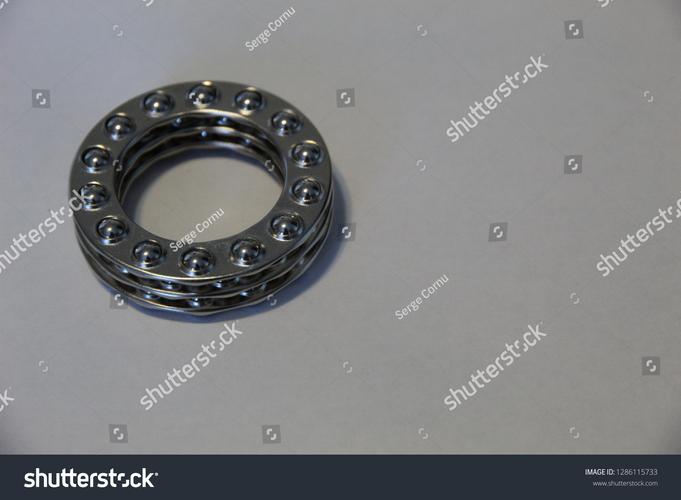Top 5 Essential Applications and Benefits of Ball Bearings in Modern Conveyor Systems
Ball bearings play a pivotal role in conveyor systems by reducing friction between moving parts, ensuring smooth operation, and extending equipment lifespan. Their precision engineering supports heavy loads while maintaining rotational accuracy, making them indispensable in manufacturing, logistics, and material handling industries.
Table of Contents
1. Types of Ball Bearings Used in Conveyor Systems2. How Ball Bearings Reduce Conveyor Maintenance Costs
3. Choosing the Right Ball Bearings for High-Speed Conveyors
4. Common Ball Bearing Failures in Industrial Conveyors
5. Lubrication Techniques for Conveyor Ball Bearings
1. Types of Ball Bearings Used in Conveyor Systems

Conveyor systems utilize various ball bearing types to meet specific operational demands. Deep groove ball bearings handle radial and axial loads in bidirectional applications, while angular contact bearings excel in unidirectional high-speed scenarios. Self-aligning ball bearings compensate for shaft misalignment in long conveyor spans, and thrust ball bearings manage axial loads in vertical conveying configurations. Specialty options like ceramic hybrid bearings offer corrosion resistance for food processing conveyors. Engineers select bearings based on load capacity, rotational speed, and environmental factors to optimize system performance.
2. How Ball Bearings Reduce Conveyor Maintenance Costs
Properly specified ball bearings significantly lower conveyor maintenance expenses through multiple mechanisms. Their precision manufacturing minimizes energy consumption by reducing friction losses up to 30% compared to plain bearings. Sealed bearing units prevent contaminant ingress, extending relubrication intervals to 10,000 operational hours. Advanced cage designs distribute loads evenly, preventing premature wear on raceways. Many modern bearings incorporate condition monitoring features like embedded sensors that predict failure timelines, enabling proactive maintenance scheduling. These combined benefits can reduce total conveyor maintenance budgets by 18-25% annually while decreasing unplanned downtime incidents.
3. Choosing the Right Ball Bearings for High-Speed Conveyors
Selecting optimal ball bearings for high-speed conveyor applications requires careful analysis of multiple parameters. Bearing material selection becomes critical – chrome steel (GCr15) remains standard, while silicon nitride ceramic balls reduce centrifugal forces at speeds exceeding 10,000 RPM. Precision ABEC-5 or higher grades ensure minimal vibration during rapid rotation. Lubrication selection must account for temperature rises – synthetic PAO oils typically outperform greases in continuous high-speed operations. Engineers should calculate the DN value (bore diameter mm × RPM) to verify bearing suitability, with modern designs achieving DN values over 1 million for specialized conveyor applications.
4. Common Ball Bearing Failures in Industrial Conveyors
Premature ball bearing failures in conveyor systems often stem from preventable issues. Contamination accounts for 42% of failures – dust, metal particles, or moisture entering through damaged seals. Improper installation causes 23% of failures, including incorrect press-fit tolerances or misaligned housings. Lubrication problems (19% of failures) range from overgreasing-induced churning to oil degradation in high-temperature zones. Electrical arcing in variable frequency drive systems creates fluting damage on bearing raceways. Regular vibration analysis and infrared thermography help detect these issues early. Implementing proper storage procedures and using bearing fitting tools can prevent 68% of installation-related failures in conveyor applications.
5. Lubrication Techniques for Conveyor Ball Bearings
Modern conveyor systems employ advanced lubrication strategies to maximize ball bearing service life. Automated grease systems deliver precise quantities (typically 1-3% of bearing space) at programmed intervals, preventing overlubrication. Oil-air lubrication systems atomize lubricants for high-speed bearings, reducing friction temperatures by 15-20°C. Food-grade NSF H1 greases meet sanitation requirements in packaging conveyors. Recent innovations include solid lubricant coatings (MoS2 or PTFE) for maintenance-free applications and biodegradable oils for environmentally sensitive facilities. Proper relubrication intervals follow the formula: L = (14,000,000 / (DN)) - (4D) where L=hours, D=bore diameter (mm), N=RPM – adjusted for environmental contamination factors.
Understanding these five critical aspects of ball bearing applications in conveyor systems enables operators to optimize performance and reliability. From selecting appropriate bearing types to implementing predictive maintenance strategies, each factor contributes to reduced operational costs and improved throughput. The following sections provide actionable insights for both new conveyor designs and existing system upgrades.
Conclusion
Ball bearings remain fundamental components in modern conveyor system engineering, directly impacting operational efficiency and maintenance requirements. By implementing proper selection criteria, lubrication practices, and condition monitoring protocols, facilities can achieve 20-30% longer bearing service life while maintaining peak conveyor performance. Continuous advancements in bearing materials and sealing technologies promise further improvements in conveyor system reliability and energy efficiency.




 13869596835
13869596835